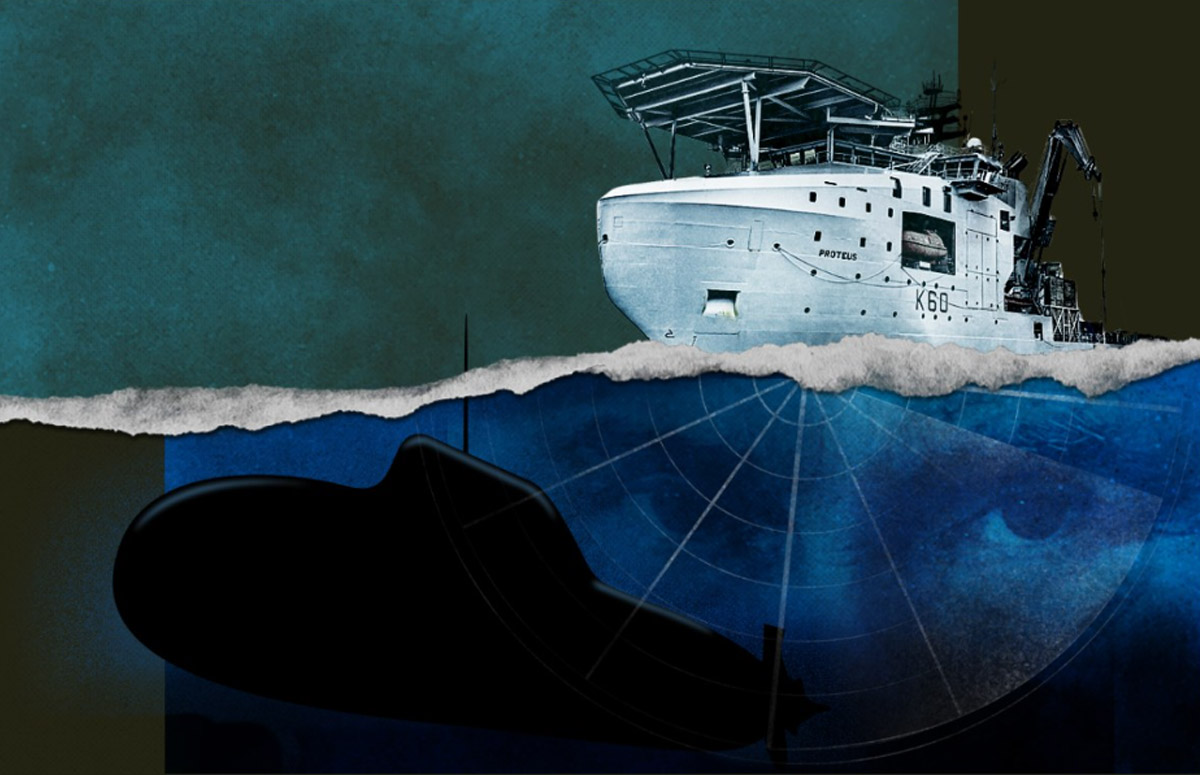
The Sunday Times publishes the results of a three-month investigation into Russian intelligence activities in British waters. Journalists spoke with more than a dozen former defense ministers, senior armed forces officers, and military experts to find out how Russia uses its unparalleled submarine warfare capabilities for mapping, hacking, and potential sabotage of key British infrastructure.
Sunday Times notes that it decided not to disclose some details, including the location of the detected sensors. The newspaper's group of journalists was given unprecedented access to the Royal Navy's deep-sea observation vessel Proteus, where they could observe the work of searching for Russian sensors.
These sensors, — as the authors of the investigation write, — were hidden in the seas around Britain and discovered by the British military, who considered them a potential threat to national security: it is assumed that they were monitoring British nuclear submarines, including attempting to gather intelligence on the four British Vanguard submarines that carry nuclear missiles.
Until now, these facts have not been made public. Some Russian sensors were discovered after being washed ashore, while others are believed to have been found by the Royal Navy.
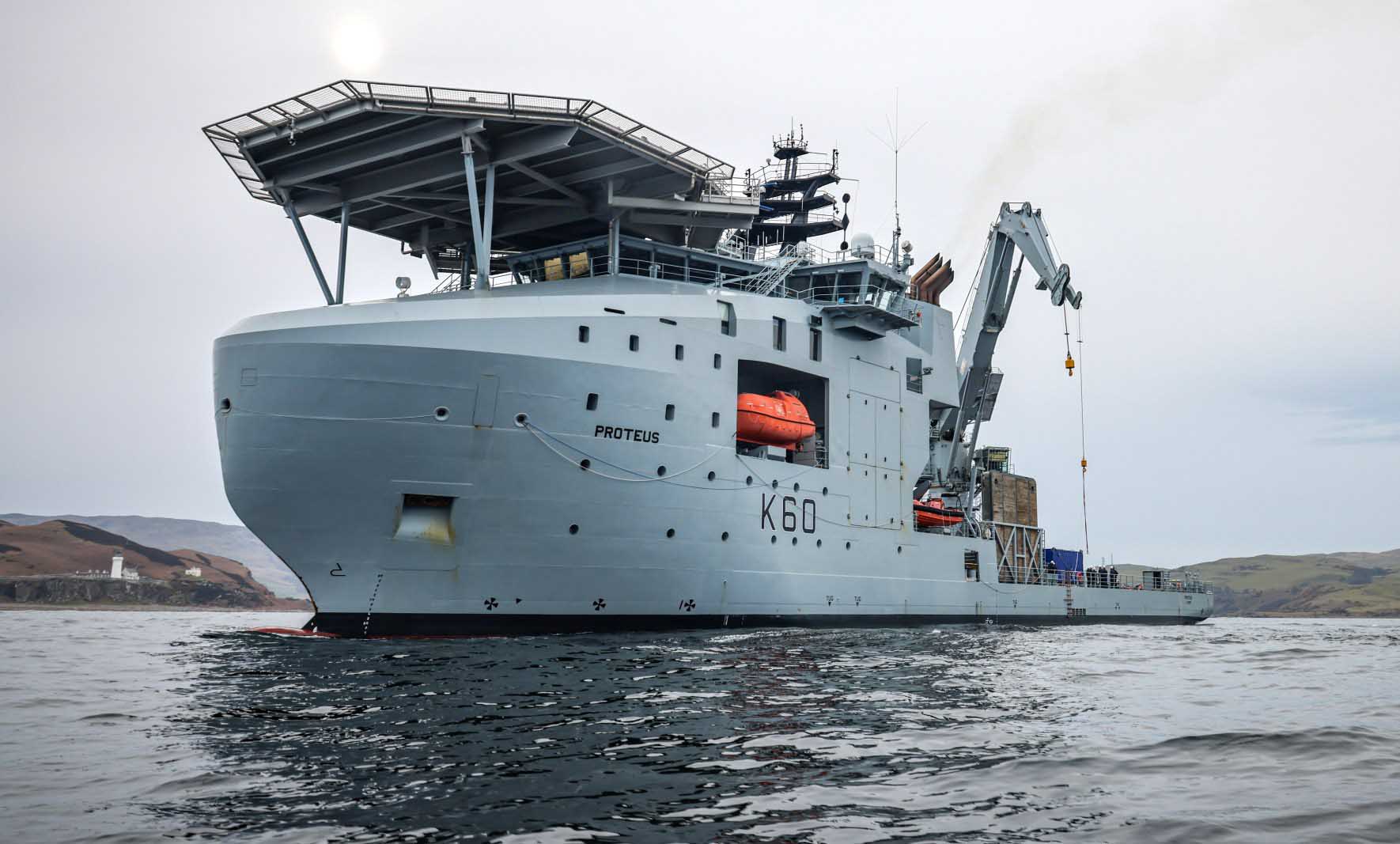
Deep-sea observation vessel Proteus. Photo: The Sunday Times
THE INVESTIGATION REVEALED
• Unmanned Russian vehicles were discovered near deep-sea communication cables.
• The Ministry of Defense had credible information that superyachts owned by Russian oligarchs could have been used for underwater reconnaissance.
• The Navy discovered other sensors installed on the seabed.
• The government is considering requiring technology and energy companies to work more closely with the military and finance the protection of underwater infrastructure.
Moscow, as believed by the British Navy, continues to invest in submarines patrolling the murky depths of the world's oceans. Russia is the only country with a fleet of specialized submarines for seabed warfare and espionage. Some of them surpass the capabilities of the UK and its NATO allies.
British military officials believe that by the time of the full-scale invasion of Ukraine, Russia had already begun laying the groundwork for a much larger conflict with NATO by engaging in surveillance and sabotage of underwater internet connections, energy pipelines, and military cables that are vital for the functioning of Western democracies. This, according to the military, is at the core of Putin's Grey Zone doctrine.
Reference: Grey Zone — a term often used to describe hostile actions that lie between traditional international politics and armed conflict. — NT.
CAT AND MOUSE GAME
«There should be no doubt that there is a war in the Atlantic. It's a cat and mouse game that has been going on since the end of the Cold War and is now flaring up again...»
Despite other versions, insiders from the Royal Navy claim that the sabotage of the Nord Stream pipeline in 2022 was the first major incident of its kind. Its «military precision» had all the hallmarks of a Kremlin Grey Zone operation.
The authors of the investigation remind that over the past 15 months, at least 11 internet cables have also been damaged in the Baltic Sea. During this time, some vessels were dragging an anchor along the seabed nearby. Suspicions fell on Russia's shadow fleet, consisting of aging tankers that Putin mainly uses to circumvent Western oil sanctions.
«To drag a vessel, you can't turn off the engine, so it's clearly a deliberate action», — said an insider from the defense department. When a cable between Estonia and Finland was damaged in December, the Joint Expeditionary Force — a group of Northern European and Baltic countries led by the UK — responded by activating Nordic Warden, a response system that uses artificial intelligence to track the location of the shadow fleet.
According to a British military official quoted by the newspaper, «...there should be no doubt that there is a war in the Atlantic. It's a cat and mouse game that has been going on since the end of the Cold War and is now flaring up again. We are witnessing phenomenal Russian activity».
The Sunday Times names some Russian intelligence ships that spy off the coast of Britain.
INTELLIGENCE SHIP «YANTAR»
The spy ship «Yantar» gained notoriety last year when it appeared off the coast of the UK. It, as stated in the article, is equipped with unmanned underwater vehicles (UUVs) and two mini-submarines capable of diving to depths of up to 6000 meters. These vehicles allow for finding and mapping infrastructure objects, as well as cutting cables with manipulators and reading information.
In November, «Yantar» was spotted in the Irish Sea near cables that transmit data for Microsoft and Google. The vessel Proteus was one of several ships sent to monitor it. Proteus, anchored near the westernmost town of Scotland, forms an impressive silhouette against the backdrop of the Isle of Arran, with its giant helipad and deep-sea crane visible from a mile away.
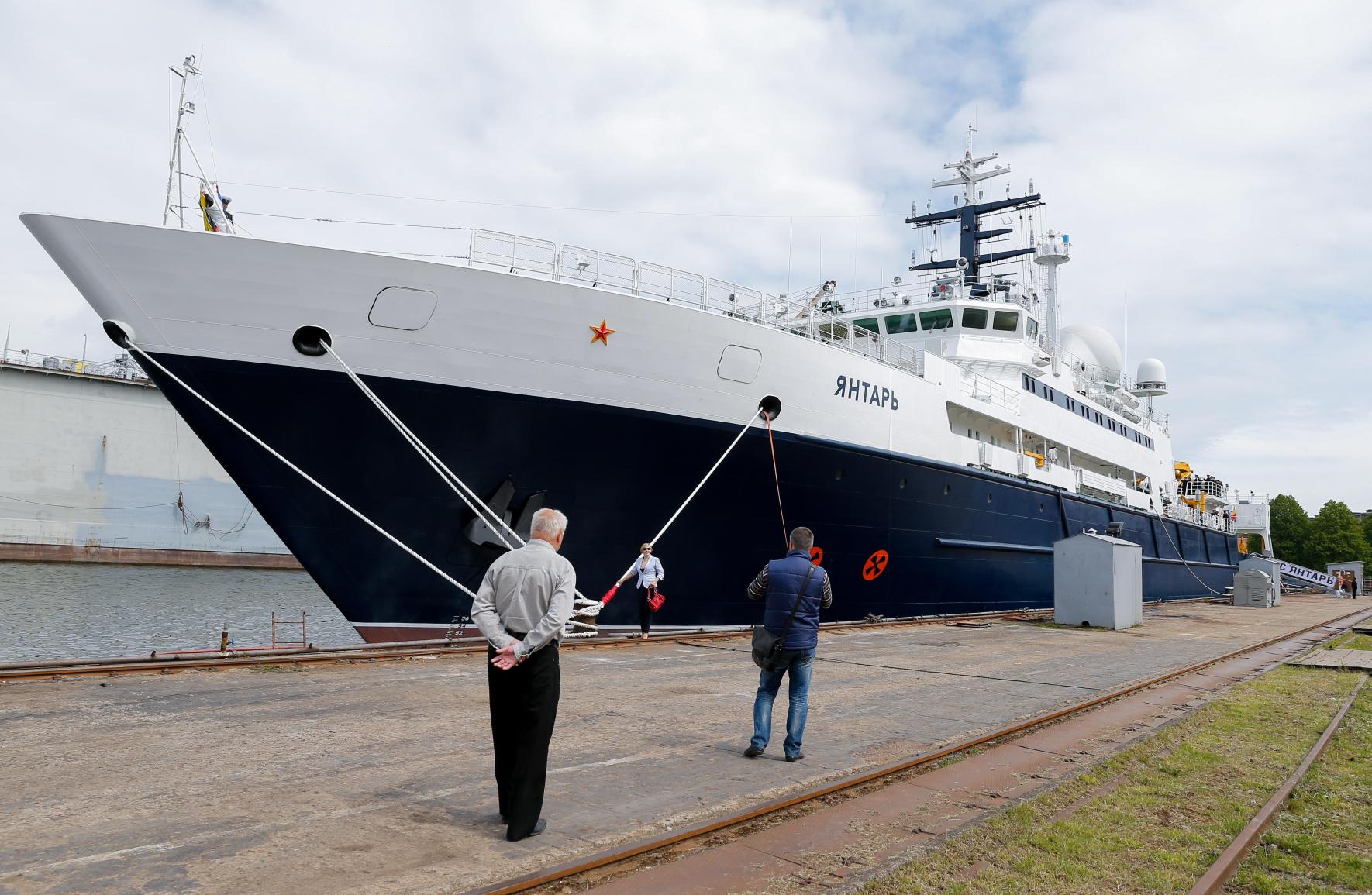
Oceanographic vessel «Yantar». Photo: Vitaly Nevar / TASS
SURVEILLANCE
When in January «Yantar» returned to the English Channel, Defense Minister John Healy authorized HMS Somerset and HMS Tyne to monitor it from a closer distance, while the nuclear submarine HMS Astute secretly observed the ship from below before surfacing nearby.
This more aggressive stance was approved by the British Navy. A senior official quoted by the authors of the investigation stated:
«...Yes, we must play by the rules of the game. But if we used to play politely, now we are flexing our muscles...»
NUCLEAR MINI-SUBMARINES
The real problem, military officials believe, is not the ship «Yantar». The waters directly surrounding the UK are mostly on the European continental shelf, meaning their depth rarely exceeds 300 meters. The Navy has several ways to monitor them and track Russian activity.
But the seabed drops to thousands of meters where the continental shelf ends. And here Proteus is the only surface vessel of the Navy capable of monitoring these depths. And it is there that the most powerful threat hides — a fleet of six mini-submarines with nuclear propulsion.
These mini-submarines are dangerous because they can remain on the seabed and are equipped with manipulators capable of cutting cables, laying explosives, or installing listening devices on fiber-optic cables. They are supported by two larger «mother» submarines, allowing them to be covertly moved to almost any point in the world.
OLIGARCHS' YACHTS IN INTELLIGENCE SERVICE
But that's not all! Three high-ranking sources in the defense department reported that before the full-scale invasion of Ukraine, there was credible information that superyachts owned by oligarchs could also have been used for underwater reconnaissance around the UK.
Some of these vessels have so-called moon pools, which can be secretly used to deploy and retrieve deep-sea reconnaissance and diving equipment.
Reference: moon pool — a device for deploying and retrieving equipment used for various offshore operations: on offshore drilling platforms, diving support vessels, fishing vessels, marine research vessels, and underwater reconnaissance vessels. — NT.
A former minister told journalists how in 2018 the amphibious assault ship HMS Albion was forced to leave the port of Limassol (Cyprus) prematurely. The ship was docked for less than a day when a superyacht belonging to one of the oligarchs anchored nearby. Suspecting that it was there to secretly observe the «Albion», the Navy ship «quickly moved on».
THREAT TO DATA TRANSMISSION
«The Russians have the capability to cut military cables»
The British government is concerned that the transmission of banking data across the Atlantic could be at risk, which is an integral part of the functioning of Western financial markets. With such a huge volume of information passing through cables every second and every day, backup satellite copies would not be able to cope.
The military fears that Russia could locate military cables, install listening devices on them, and even destroy them. «The Russians have the capability to cut military cables», — shared one of the high-ranking military officials.
In 2020, for example, as reported by the Ministry of Defense, Russian unmanned underwater vehicles (UUVs) capable of operating at great depths and covering hundreds of miles in a few days were discovered near strategically important underwater cables. At that time, there was no mother ship or submarine nearby, so it was clear that they had traveled a great distance to reach the cables.
The Ministry of Defense considers it «undeniable» that the UUVs attempted to hack the cables, although there is currently no evidence that Russia succeeded.
SENSOR DEVICES OFF THE COAST OF BRITAIN
«It's a world shrouded in mystery and deception, and it's very difficult to achieve absolute clarity»
In recent years, the Navy has discovered several sensor devices in the sea around Britain, which, according to the Ministry of Defense, were installed to detect the movements of the four British Vanguard submarines, which together constitute the UK's continuous at-sea nuclear deterrent.
It is unclear what type of sensors were found, as this appears to be a military secret, — write the journalists. Several of them were washed ashore, and the Navy discovered other sensors.
The Sunday Times quotes one of the high-ranking officials in the Navy, who compares it to a «space race»:
«...It's a world shrouded in mystery and deception, and it's very difficult to achieve absolute clarity. But there is enough smoke to suggest that there is fire somewhere...»
STAYING AHEAD
The deep-sea vessel visited by The Sunday Times journalists was purchased from Norway to protect the UK's critical underwater infrastructure and to allow authorities to better understand the scale of the threat. After modification, the vessel was named Proteus, launched, and entered service in the fall of 2023.
The publication's journalists were present as the ship's crew learned to work with one of the novelties — SeaCat, the latest autonomous torpedo-shaped vehicle 3 meters long. A high-resolution camera is installed on its nose, and advanced radar systems are on its sides, like wings. It can operate for 24 hours at a depth of 300 meters, and according to one of the commanders, the device detects mines much faster than conventional devices.
The article lists other latest deep-sea reconnaissance tools now equipped by the UK Navy. In addition to SeaCat, these are:
• Gavia UUV, a vehicle capable of diving to a depth of 1000 meters, which is enough to cover most of the waters surrounding the UK;
• Defender, which can be equipped with a range of equipment, including manipulators.
All three of these vehicles are equipped with sophisticated sonars that allow scanning large areas of the seabed, and upon detecting suspicious activity, they can approach and take high-resolution images.
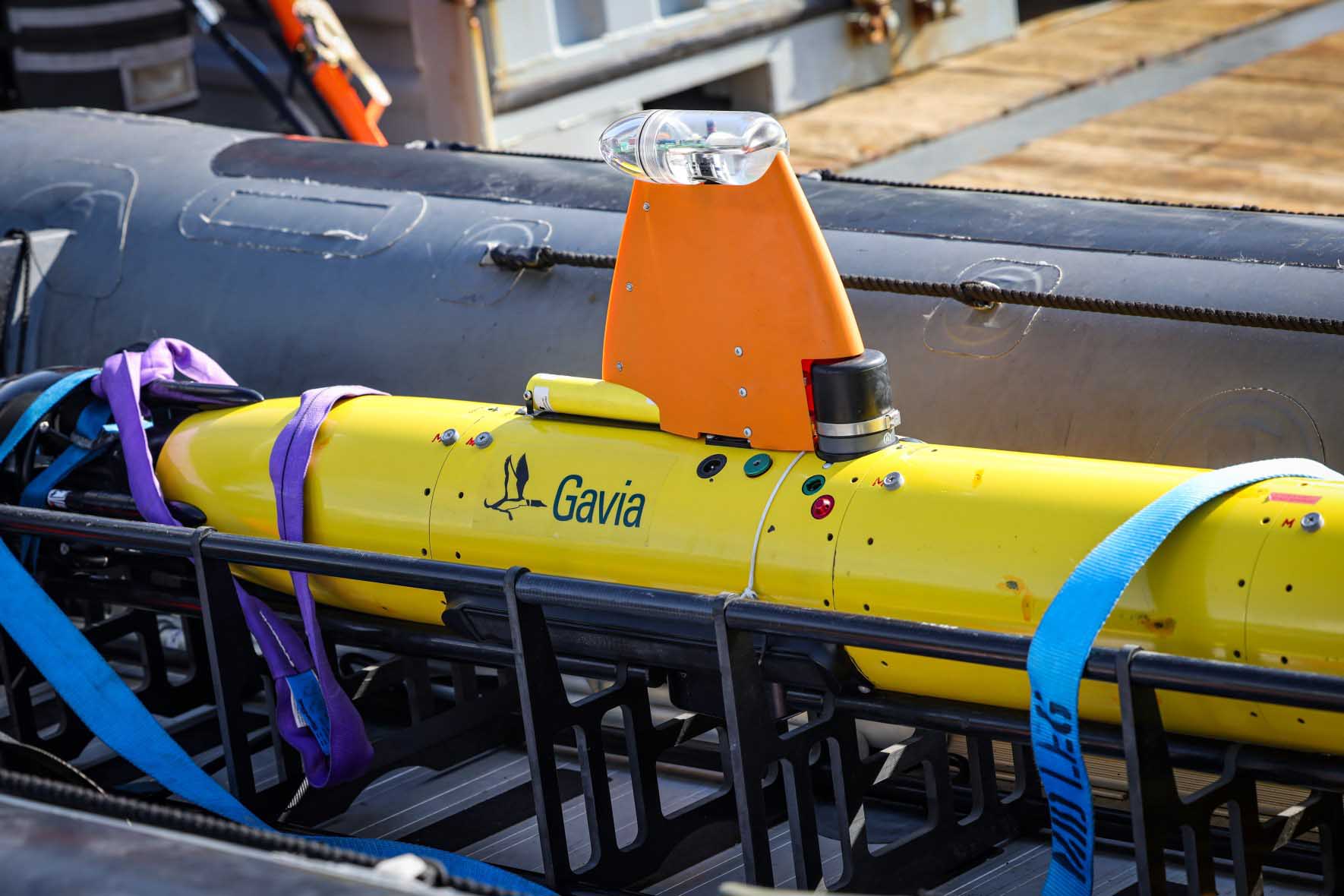
Deep-sea vehicle Gavia. Photo: The Sunday Times
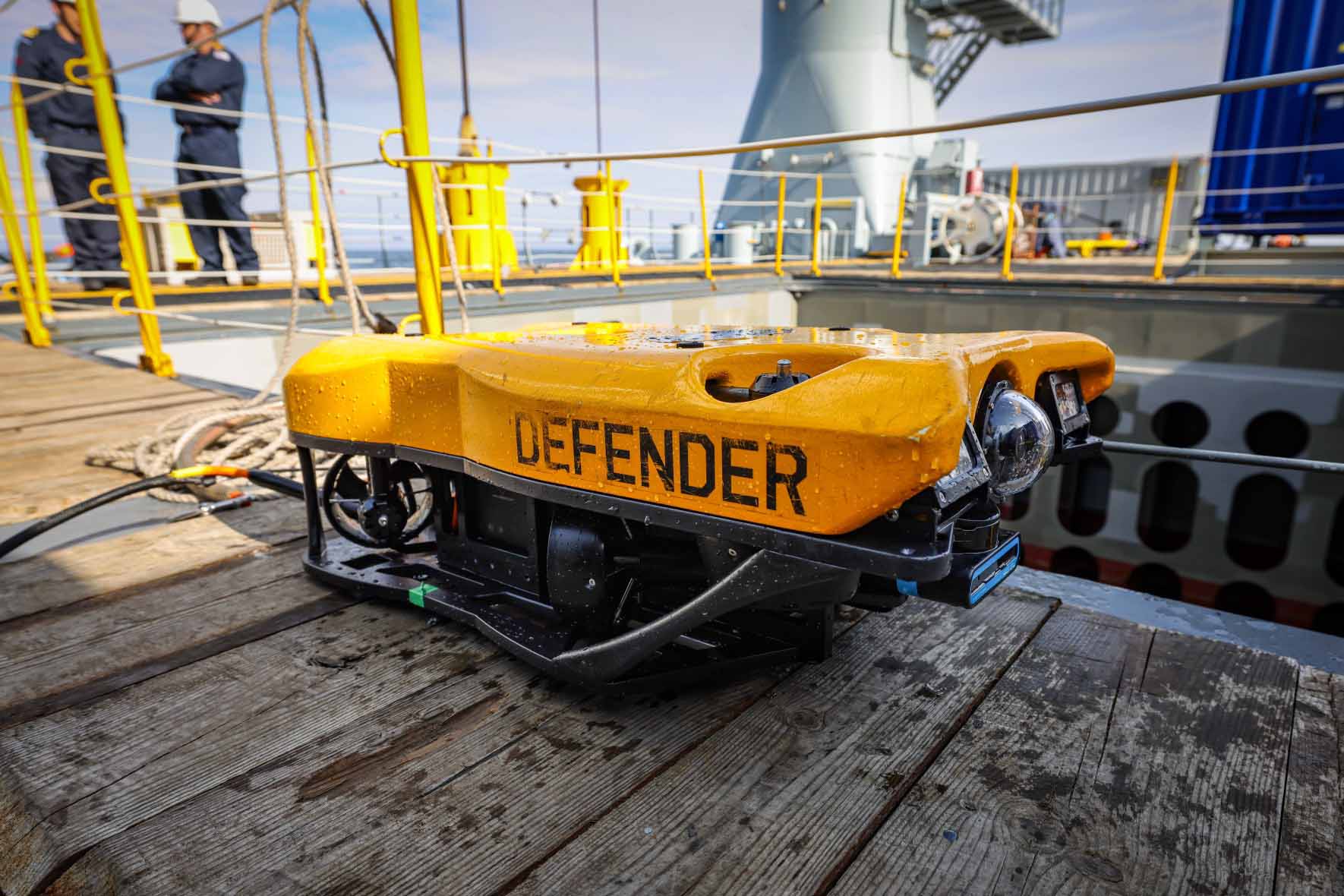
Deep-sea vehicle Defender. Photo: The Sunday Times
FUTURE PROTECTION
The British government commits to spending 2.5% of GDP on defense by 2027, with further investments expected in the Navy's underwater combat capabilities.
It is expected that in the strategic defense review ordered by Defense Minister John Healy to address gaps in the UK's armament, more attention will be recommended for underwater infrastructure.
The authors of the investigation conclude that Keir Starmer's government recognizes the scale of the threat, and additional multi-billion defense spending will bring Britain to combat readiness.